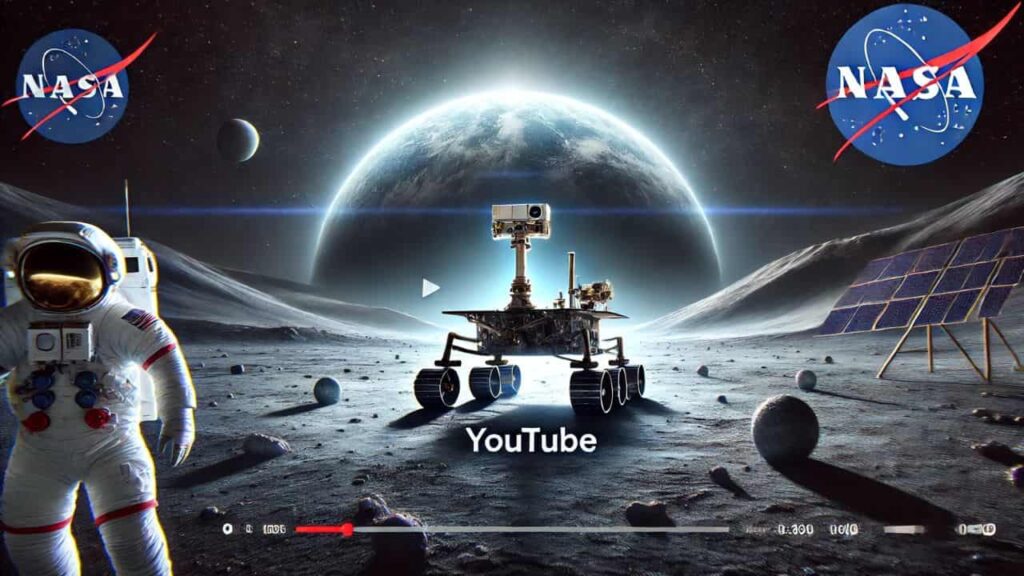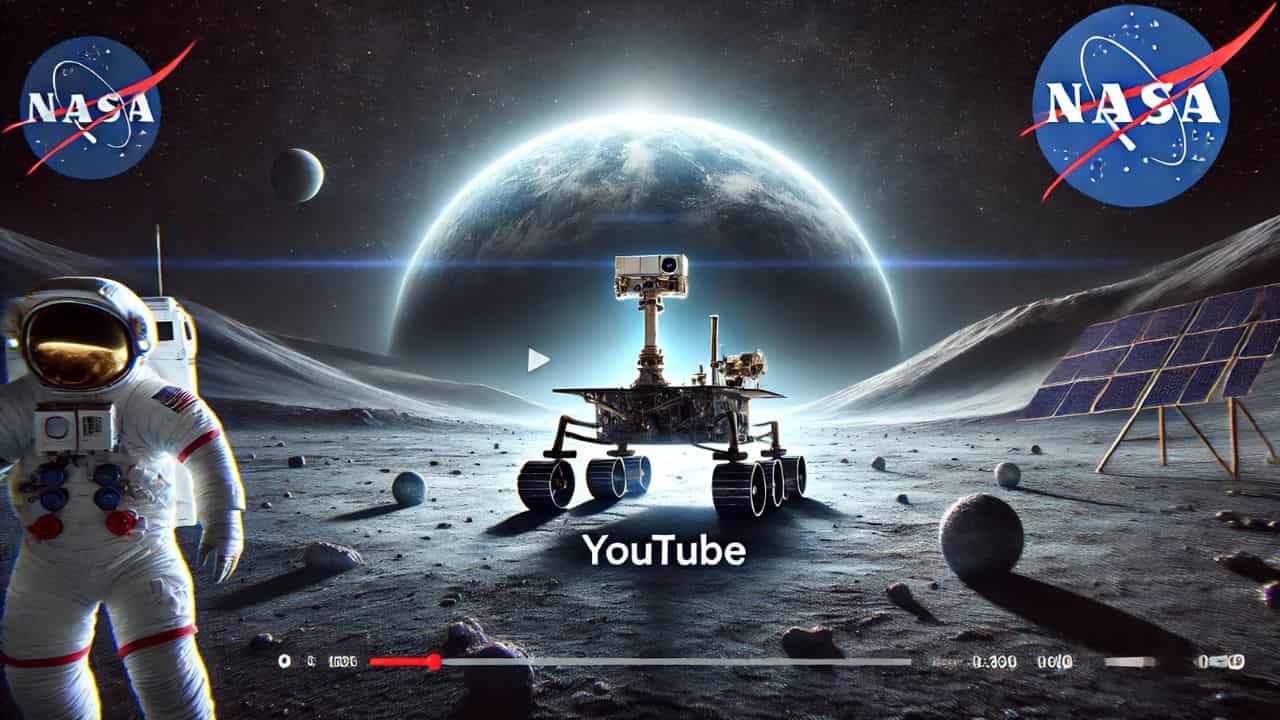NASA VIPER Rover, Lunar Exploration, Moon South Pole, Water Ice on Moon, Space Partnerships, NASA RFI, Lunar Resources, VIPER Rover Mission, Commercial Lunar Payload Services, Moon Rover Collaboration
Explore NASA’s innovative approach to lunar exploration as the agency seeks partnerships with American companies and institutions for using the VIPER Moon Rover. Learn about the mission’s objectives, potential collaborations, and the future of lunar resource exploration in this in-depth article.

NASA’s VIPER Rover: Exploring New Horizons Through Public-Private Partnerships
NASA has long been at the forefront of space exploration, continually pushing the boundaries of what is possible in the quest to understand more about our universe. One of its most ambitious projects in recent years has been the Volatiles Investigating Polar Exploration Rover, or VIPER. This advanced robotic rover was designed to explore the Moon’s South Pole, particularly to map the location and concentration of potential off-planet resources like water ice. However, in a surprising turn of events, NASA announced its intent to discontinue the VIPER mission and pursue alternative methods to verify the presence of frozen water at the lunar South Pole. Despite this, NASA remains committed to maximizing the utility of the VIPER rover by seeking interest from American companies and institutions in conducting a mission using this sophisticated piece of technology.
The VIPER Mission: A Brief Overview
The VIPER mission was conceived as part of NASA’s Artemis program, which aims to establish a sustainable human presence on the Moon by the end of the decade. VIPER’s primary objective was to explore the Moon’s South Pole region, which is believed to contain vast quantities of water ice trapped in permanently shadowed craters. This water ice is of immense interest to NASA and other space agencies because it could potentially be used to support human life and serve as a resource for producing rocket fuel, thereby enabling longer-term human missions to the Moon and beyond.
VIPER was designed to be a highly capable rover, equipped with a suite of scientific instruments capable of analyzing lunar soil and detecting the presence of water ice. The data collected by VIPER was expected to significantly advance our understanding of the distribution of water ice on the Moon and inform future lunar exploration missions.
NASA’s Request for Information (RFI)
On July 17, 2024, NASA made a surprising announcement: the agency intended to discontinue the VIPER mission in its current form. Instead of sending VIPER to the Moon under NASA’s direct control, the agency decided to seek alternative methods for verifying the presence of frozen water at the lunar South Pole. However, recognizing the substantial investment already made in developing the VIPER rover, NASA issued a Request for Information (RFI) to gauge interest from American companies and institutions in using the existing VIPER rover system for a mission of their own.
The RFI, which was open from July 17 to August 1, invited expressions of interest from U.S. organizations and industry. NASA sought to learn more about how interested parties would use the VIPER rover, particularly at minimal to no cost to the government. This move reflects NASA’s commitment to ensuring that the valuable engineering, technology, and expertise developed for the VIPER project are not wasted, even as the agency shifts its focus to other lunar exploration priorities.
The Potential for Partnerships
The RFI represents an exciting opportunity for American companies and institutions to collaborate with NASA on a lunar exploration mission. By partnering with NASA, these organizations could gain access to the highly advanced VIPER rover, which has already been developed and tested. This could significantly reduce the time and cost required to conduct a lunar mission, as much of the groundwork has already been laid.
Nicola Fox, the Associate Administrator for NASA’s Science Mission Directorate, emphasized the importance of making the best use possible of the VIPER rover. She noted that partnership opportunities on VIPER would allow NASA to advance scientific knowledge of the Moon without impacting the agency’s future cadence of commercial deliveries to the lunar surface. In other words, by partnering with external organizations, NASA can continue to pursue its broader lunar exploration goals while still making use of the VIPER rover.
This approach also aligns with NASA’s broader strategy of fostering public-private partnerships in space exploration. By collaborating with private industry, NASA can leverage the expertise, resources, and innovation of the commercial sector to achieve its ambitious goals. This model has already proven successful in other areas, such as the Commercial Crew Program, which has seen private companies like SpaceX and Boeing develop spacecraft to transport astronauts to and from the International Space Station.
The Importance of Lunar Exploration
The decision to discontinue the VIPER mission in its original form should not be interpreted as a lack of interest in lunar exploration. On the contrary, NASA remains deeply committed to exploring the Moon, particularly its South Pole region. The presence of water ice on the Moon is of enormous strategic importance, both for supporting future human missions and for enabling the production of resources that could be used for further space exploration.
In recent years, there has been a resurgence of interest in lunar exploration, driven by advances in technology and a renewed focus on the potential for human settlement beyond Earth. The Moon is seen as a stepping stone to Mars and other destinations in the solar system, and understanding its resources is a critical part of that journey. The data collected by missions like VIPER will be invaluable in planning future lunar missions, both crewed and uncrewed.
Looking Ahead: The Future of VIPER
As NASA explores interest from American companies and institutions in using the VIPER rover, the future of this advanced piece of technology remains uncertain. However, the agency’s decision to seek partnerships reflects its commitment to maximizing the return on investment from the VIPER project, even as it shifts its focus to other methods of lunar exploration.
The response to the RFI will likely play a key role in determining the future of VIPER. If sufficient interest is generated, the rover could still play a significant role in advancing our understanding of the Moon’s South Pole and its potential resources. This, in turn, could inform future NASA missions and help pave the way for sustainable human exploration of the Moon.
Conclusion
NASA’s decision to discontinue the VIPER mission in its original form is a reminder of the dynamic nature of space exploration. As new challenges and opportunities arise, the agency must continually reassess its priorities and strategies. However, the issuance of the RFI demonstrates NASA’s commitment to ensuring that the valuable work done on VIPER does not go to waste.
By inviting American companies and institutions to express interest in using the VIPER rover, NASA is opening the door to new possibilities for collaboration and innovation. These partnerships could help advance our understanding of the Moon and its resources, paving the way for future exploration and potentially even human settlement.
As we look to the future, it is clear that the exploration of the Moon will continue to be a key priority for NASA and the broader space community. The potential for discovering and utilizing resources on the Moon is vast, and the work done by missions like VIPER will be instrumental in unlocking that potential. Whether through NASA’s own efforts or in partnership with other organizations, the quest to understand and explore the Moon is far from over. The VIPER rover, with its advanced technology and mission capabilities, may yet have a vital role to play in that journey.
Read More
- NASA Engages Connecting Communities with Space and STEM Experts
- How NASAs Citizen Science Initiatives Fuel the Future of Exoplanet Research
- NASA Considers SpaceX Rescue for Stranded Boeing Starliner Crew A Major Setback for Boeing
- NASA Provides Update on Crew Flight Test and Space Station Missions










